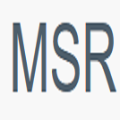A potential Mars Sample Return (MSR) architecture is being jointly studied by NASA and ESA. As currently envisioned, the MSR campaign consists of a series of 3 missions: sample cache, fetch and return to Earth. In this paper, we focus on the fetch part of the MSR, and more specifically the problem of autonomously detecting and localizing sample tubes deposited on the Martian surface. Towards this end, we study two machine-vision based approaches: First, a geometry-driven approach based on template matching that uses hard-coded filters and a 3D shape model of the tube; and second, a data-driven approach based on convolutional neural networks (CNNs) and learned features. Furthermore, we present a large benchmark dataset of sample-tube images, collected in representative outdoor environments and annotated with ground truth segmentation masks and locations. The dataset was acquired systematically across different terrain, illumination conditions and dust-coverage; and benchmarking was performed to study the feasibility of each approach, their relative strengths and weaknesses, and robustness in the presence of adverse environmental conditions.
翻译:美国航天局和欧空局正在联合研究一个潜在的火星样品返回(MSR)结构。按照目前的设想,MSR运动由一系列的3项任务组成:样本缓存、取回和返回地球。在本文中,我们侧重于提取火星表面沉积的样品管的部分,更具体地说,是自动探测和定位的问题。为此,我们研究了两种基于机器的处理办法:首先,一种以使用硬编码过滤器和3D管形模型的模板匹配为基础的几何驱动方法;第二,一种以动态神经网络和学习特点为基础的数据驱动方法。此外,我们介绍了在具有代表性的户外环境中收集的样品管图象的大型基准数据集,并附有地面真相分割面和地点的附加说明。数据集是在不同地形、照明条件和尘封中系统地获得的;并进行了基准化,以研究每一种方法的可行性、其相对的强弱和在不利环境条件下的稳健性。



